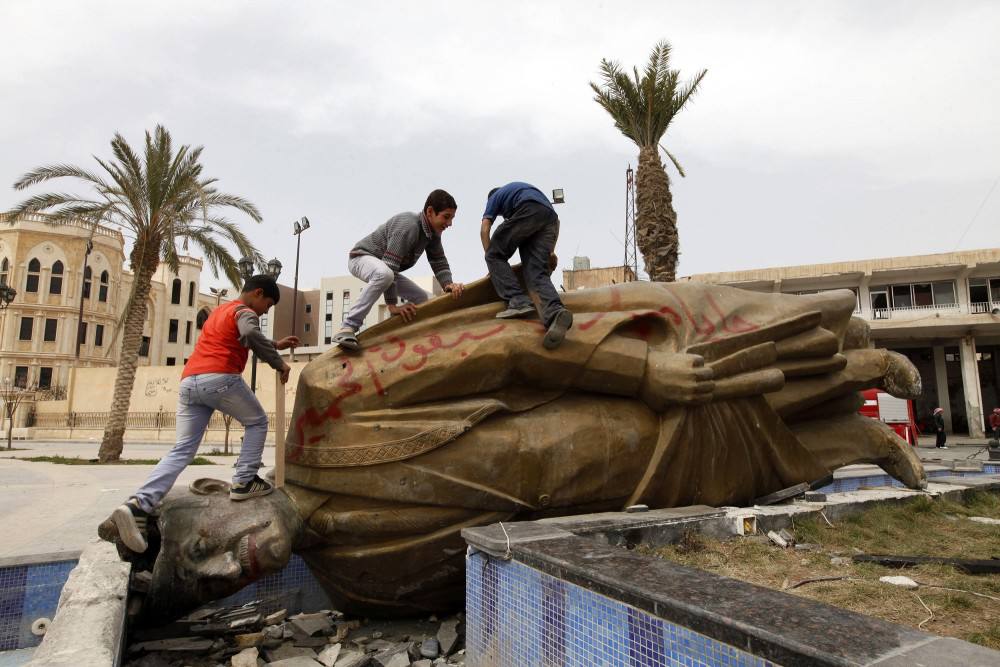Bashar left
Bashar left
In just 11 days, a massive attack by Syrian rebels led by the jihadist group Hayat Tahrir al-Sham ended the fifty-year rule of the Assad family. What will happen now?
The fifty-year unchallenged rule of the Assad family over Syria, nearly fourteen years of which were spent in the whirlpool of civil war, all ended in just 11 days after Syrian rebels launched a massive attack against Bashar al-Assad’s regime on November 27th. Bashar had come to power in 2000 after the death of his father Hafez al-Assad. On the evening of January 8th, the rebels announced they had taken control of Damascus, the capital, and declared it liberated, amidst reports of President Assad fleeing on a special plane to an unknown destination.
The main group leading the attack, which started from the north, is the jihadist movement Hayat Tahrir al-Sham (HTS), led by Abu Mohammad al-Julani. In recent days, the rebel leader has begun using his real name, Ahmad al-Sharaa, instead of his battlefield pseudonym. This move is part of a broader effort to create a positive image of himself, aiming to present Hayat Tahrir al-Sham and its leader as negotiable parties, distancing from the more extremist aspects of Sunni jihadism. The fall of Assad, which was unimaginable just weeks ago, brings new prospects for the country and the region and certainly marks a turning point.
The end of Assad
A coalition of Islamist groups and Turkish supporters announced last night that Damascus has been liberated from the dictator Bashar al-Assad. The Syrian Observatory for Human Rights, a London-based NGO utilizing a network of field activists, confirmed that Bashar al-Assad left the capital’s airport while security forces withdrew immediately after the presidential plane took off. The destination of the now former president was unknown until Moscow announced Assad and his family’s presence in Russia.
The rebels described this moment as a liberation long awaited by exiles and prisoners. Armed men seized the Syrian TV and radio building, forcing the staff to leave.
Thousands gathered in the city center at Umayyad Square near the Ministry of Defense and the Army Headquarters. Statues of the Assad family, including the father Hafez and his brother Bassel, who died in a mysterious incident in 1994, were destroyed in various locations.
The rebels also announced they had seized the Saydnaya military prison, located about 30 kilometers north of Damascus, notorious for the regime’s security forces’ inhumane treatment of prisoners.
Is Syria lost?
Shortly before the announcement about Damascus, Hayat Tahrir al-Sham also took full control of Homs, the country’s third-largest city, after moving there following the capture of Hama.
The pan-Arab Al Jazeera network reported celebrations in the city with crowds gathering at the Clock Square, thrilled by the fall of Bashar al-Assad. In recent days, with the activation of armed groups in the south of the country, the rebels began a real siege of the capital, which took only a few hours to fall.
The advance of the anti-government forces was very rapid and caught the regular army by surprise. The lack of intervention by Assad’s main allies, Russia and Iran, who operated through Tehran-affiliated groups like Hezbollah and Iraqi Shia fighters, also had an impact.
The regime that had ruled Syria for over half a century suddenly found itself alone and unsupported, losing control of the country’s largest cities within days.
What happens now?
We are in the final chapter of a bloody history that began in 2011 with a series of protests against Assad, which turned into a civil war and then escalated into a regional and international conflict. Now, a difficult phase of transition begins, where power balances will largely be determined based on field developments. Shortly after the rebels’ announcement, Syrian Prime Minister Mohammad al-Jalali announced that he had his last contact with Assad last night and has no information about the current position of the president.
In an interview with the pan-Arab network Asharq Al-Awsat, al-Jalali revealed that he had spoken with the leader of Hayat Tahrir al-Sham and emphasized the importance of maintaining state institutions. The Prime Minister also expressed his readiness to cooperate with any leadership chosen by the Syrian people. Several issues remain to be resolved at the territorial level. The coastal region, where a significant portion of the Alawite population supporting Assad is concentrated and where Russian bases in Tartus and Latakia are located, has not yet come under rebel control.
This region will likely be the subject of negotiations between Iran, Turkey, and Russia. The foreign ministers of these countries gathered in Doha yesterday to decide on the future structure of the country. Northeast Syria, however, is in the hands of the Kurdish-led Syrian Democratic Forces (SDF), which have made advances at the regime’s expense west of the Euphrates River in recent days. In other words, they are participating in the disintegration of the Syrian Arab Republic, which was under Assad’s leadership.
The future political structure of Syria will be a complex issue. The rebel front is not unified, and therefore various groups have fiercely competed to determine which one would capture the capital first. However, there is no doubt that Hayat Tahrir al-Sham has acted as the military and even diplomatic backbone of this massive attack. Al-Julani has made significant efforts these days to present a credible image of himself and the movement he represents, distancing from aspects related to Salafi jihadism. The rebel leader has also directly, albeit behind the scenes, engaged in talks with various local and international players, including Russia, Israel, Iraq, and Jordan, acting as the de facto leader of the new Syrian government.

